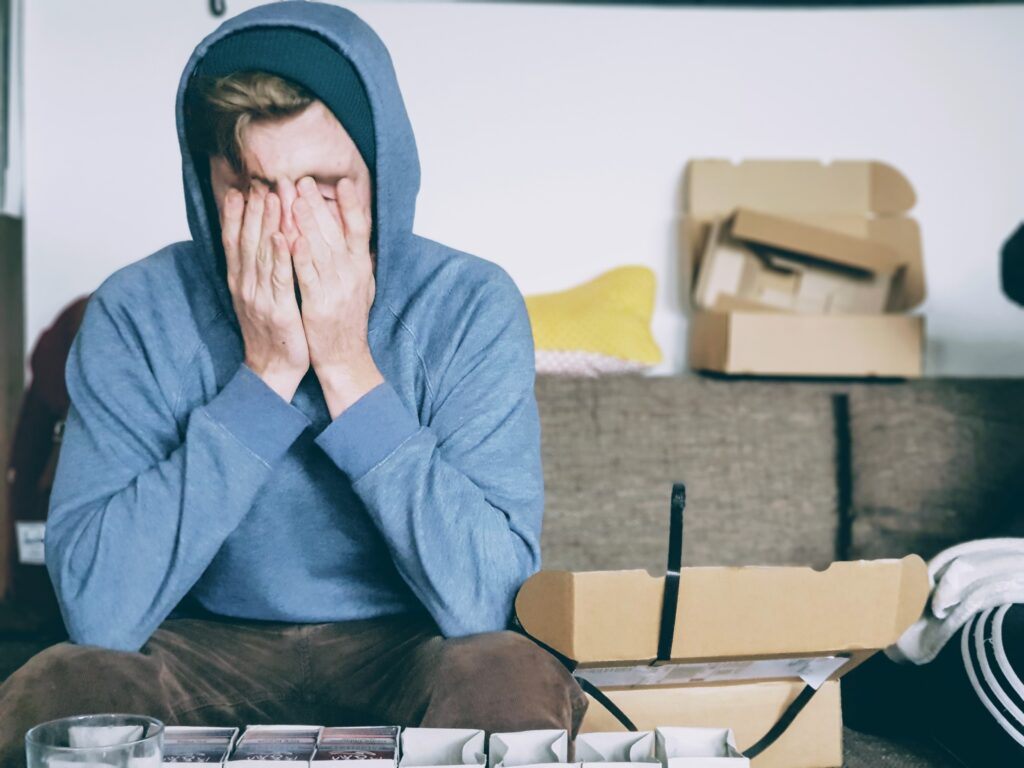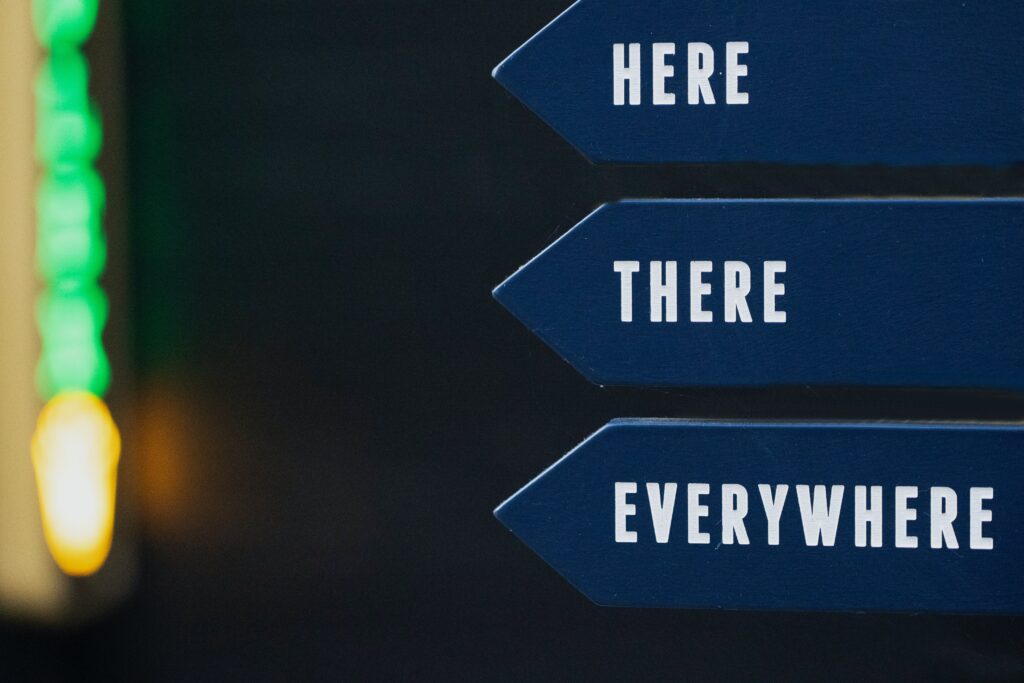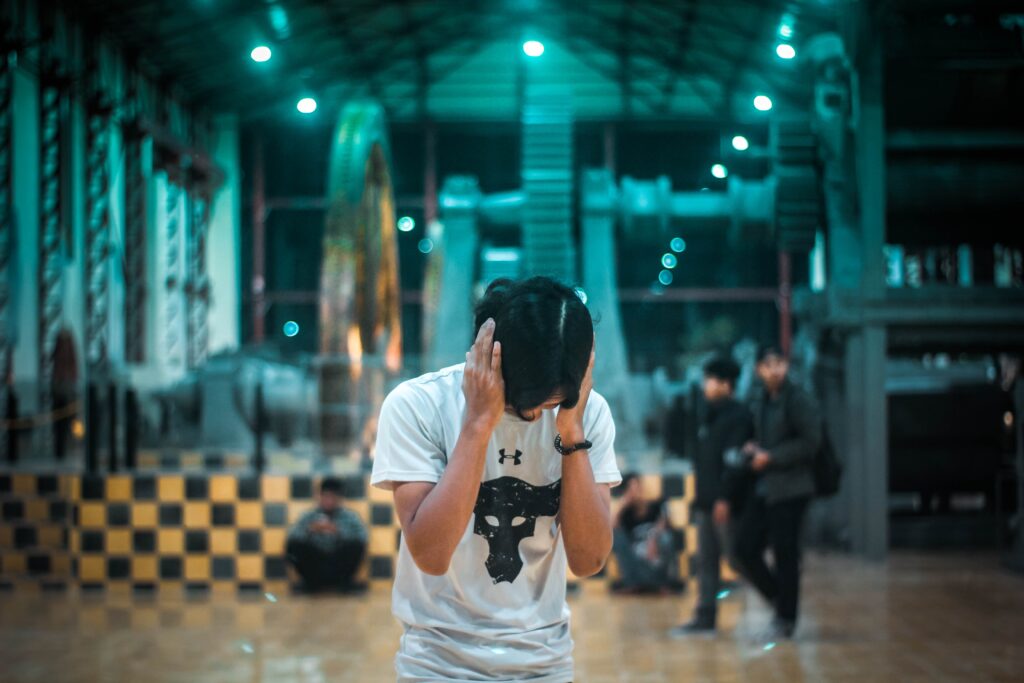Introduction
Welcome to “Social Burnout: Why You Feel Drained After Events and How to Recharge”. For many introverts, social events can be like a marathon 🏃 – draining and overwhelming. But what if you could change that? What if you could transition from feeling wiped out to energized, embracing a journey from introvert to extrovert? Yes, it’s possible, and it’s a path more and more people are exploring. This article delves into understanding social burnout and offers practical ways to recharge. Discover how embracing this introvert to extrovert transition can transform your social experiences from exhausting to exhilarating. Let’s dive in! 🌟📘🔍

Introduction to Social Burnout: Understanding the Phenomenon
Social burnout, a common yet often misunderstood phenomenon, particularly affects introverts who navigate social landscapes differently than their extroverted counterparts. It’s crucial to recognize that this isn’t just about feeling tired after a party or gathering; it’s a deeper, more pervasive sense of exhaustion that can affect one’s overall well-being. To fully grasp the nature of social burnout, it’s essential to understand the underlying mechanics. For introverts, social interactions, even enjoyable ones, can deplete their energy reserves more rapidly than for extroverts. This isn’t a flaw or weakness but rather a fundamental aspect of their personality structure.
However, acknowledging this doesn’t mean accepting defeat. Instead, it opens up a pathway to better manage and mitigate the effects of social fatigue. It’s here where our advanced introvert test becomes an invaluable tool. By taking this test, introverts can gain deeper insights into their specific social energy dynamics, helping them to strategize more effectively. This personalized understanding is crucial because every introvert’s experience with social burnout is unique.
Furthermore, this phenomenon isn’t static; it evolves as one navigates different life stages and social contexts. Thus, understanding social burnout requires a dynamic approach, constantly adapting to new experiences and challenges. It’s about building awareness, recognizing personal limits, and learning how to replenish energy effectively.
In this journey, knowledge is power. The more one understands about social burnout, the better equipped they are to tackle it head-on. This article aims to demystify social burnout, offering clarity and practical advice to those who find socializing more draining than energizing. So, let’s embark on this journey of understanding and empowerment, transforming how we perceive and handle social interactions. 🤔💡🌱

Identifying Signs of Social Burnout: Key Symptoms to Watch For
Recognizing the signs of social burnout is the first step towards addressing it effectively. This condition often manifests in subtle ways, making it important to be vigilant about the changes in one’s feelings and behaviors after social interactions. The most common symptom is a profound sense of tiredness that goes beyond normal fatigue. It’s not just about wanting to sleep; it’s about feeling emotionally and mentally drained, as if one’s energy has been sapped away. This exhaustion can linger for hours or even days, affecting one’s ability to engage in other activities or maintain usual productivity levels.
Another key indicator is the feeling of dread or anxiety at the thought of upcoming social events. This isn’t just the usual nervousness one might feel; it’s a more intense apprehension, often leading to avoidance of social situations altogether. Additionally, irritability and a decreased tolerance for social stimuli are also tell-tale signs. People experiencing social burnout may find themselves getting quickly frustrated or overwhelmed in situations that previously felt manageable.
Physical symptoms can also accompany social burnout. These might include headaches, muscle tension, or a general sense of being unwell, often exacerbated by the stress of socializing. It’s essential to listen to these physical cues as they are often the body’s way of signaling that it’s time to step back and recharge.
In our intro to extro community, members frequently discuss these symptoms, sharing experiences and coping strategies. Engaging in this community can be incredibly validating and helpful, as it provides a platform to connect with others who are navigating similar challenges. By identifying these symptoms early, one can take proactive steps to manage social burnout, preventing it from escalating and impacting overall quality of life. Let’s delve into recognizing and understanding these signs, a crucial step in the journey towards better managing social energy and reducing burnout. 🌟🤝🧠💬

Social Overstimulation: The Impact of Crowds and Noise
The impact of social overstimulation, particularly in the context of crowded and noisy environments, is a significant factor contributing to social burnout. This overstimulation can be overwhelming, especially for introverts, who often process sensory data more deeply. It’s not just the physical presence of many people but also the barrage of sounds, lights, and even the energy of a crowd that can quickly deplete their mental and emotional reserves. The constant need to process and respond to external stimuli in such settings can lead to a state of sensory overload, making it challenging to focus or find a sense of calm.
Noise, a key component of social overstimulation, isn’t merely about volume. It’s about the unpredictability and uncontrollability of sounds in a social setting. Multiple conversations, background music, and even the clatter of dishes in a crowded restaurant can compound to create a cacophony that’s mentally exhausting. This auditory chaos requires continuous effort to filter and focus, which can be exceptionally draining.
In addition to auditory stimuli, visual stimuli in crowded environments can also contribute to overstimulation. Bright lights, fast-moving crowds, and the need to constantly navigate through space can create a sensory bombardment that’s hard to escape. This visual chaos can lead to a sense of disorientation and fatigue, further exacerbating the feeling of being drained.
Understanding the impact of social overstimulation is vital in learning how to manage it. In our intro to extro roadmap, we discuss strategies that differ significantly from typical guides, focusing on practical and tailored approaches for those who find crowded and noisy environments particularly challenging. By recognizing and respecting one’s limits in these settings, it becomes possible to strategize ways to engage in social events without feeling overwhelmed. Whether it’s finding quieter corners in a party, taking regular breaks, or choosing to attend smaller gatherings, these strategies can help in managing the intensity of social overstimulation, paving the way for a more balanced and enjoyable social experience. 🌐🔊👥🌟

Physical Factors: How Diet and Sleep Affect Social Stamina
The connection between physical well-being and social stamina is often overlooked, yet it plays a crucial role in managing social burnout. Diet and sleep, in particular, are foundational elements that can significantly influence how one copes with the demands of social interactions. Poor dietary habits and inadequate sleep can exacerbate the feeling of being drained after social events, making it more challenging to recover and maintain a healthy balance.
Diet plays a pivotal role in maintaining energy levels. Consuming foods high in sugar and caffeine might provide a temporary energy boost, but they often lead to a crash, leaving one feeling even more fatigued. On the other hand, a balanced diet rich in whole foods provides sustained energy. Foods like complex carbohydrates, lean proteins, and healthy fats are essential for maintaining steady blood sugar levels, which in turn can help in managing energy more effectively during social interactions. Hydration is also key; dehydration can cause fatigue and reduce cognitive function, making socializing more draining.
Sleep is equally critical. Lack of adequate rest can impair cognitive abilities, including attention, memory, and emotional regulation. This can make it more challenging to engage in and enjoy social interactions. Furthermore, being well-rested helps in coping with stress, a common element in social settings. Quality sleep enhances one’s resilience to stress and improves overall mood, making social engagements less taxing.
In addressing social burnout, it’s important to consider these physical aspects. Incorporating healthy eating habits and ensuring sufficient rest are not just good practices for general health; they are strategic ways to enhance social stamina. By nurturing the body with the right nutrients and rest, one can build a stronger foundation to handle the complexities of social interactions. This approach is about more than just managing social burnout; it’s about empowering oneself to engage in social events in a more energized and fulfilling way. 🍏💤🍽️🌟
Setting Boundaries: Learning to Say No to Social Obligations
Mastering the art of setting boundaries is a crucial skill in combating social burnout, especially for those who feel a sense of obligation to attend every social event. Learning to say no is not just about declining invitations; it’s about understanding and honoring one’s own energy limits. It involves recognizing that it’s okay to prioritize personal well-being over social expectations.
For many, especially introverts, there’s often an internal conflict between the desire to be sociable and the need to preserve energy. This conflict can lead to agreeing to social commitments that may not align with one’s true capacity to engage. Over time, this can lead to a build-up of exhaustion and resentment, hallmarks of social burnout. It’s important to remember that saying no does not equate to being antisocial or rude; rather, it’s a form of self-care and self-awareness.
Developing the ability to set boundaries starts with self-reflection. Understanding what kinds of social situations are energizing and which are draining is key. This might mean preferring small, intimate gatherings over large parties or opting for quiet evenings with close friends rather than attending crowded events. Once these preferences are clear, communicating them to others becomes essential. It’s about being honest and assertive about one’s limits, while also being respectful of others’ invitations and efforts.
Equally important is to not feel guilty for making these choices. Social obligations can come with a lot of pressures, but prioritizing one’s mental health and energy levels is paramount. It’s about finding a balance between social engagement and personal well-being.
By setting and respecting personal boundaries, one can enjoy social interactions more fully and avoid the toll of overcommitment. This approach allows for a more sustainable social life, where engagements are chosen thoughtfully, ensuring that they add value and joy rather than deplete energy. Embracing this practice of setting boundaries can transform one’s social experiences, making them more enjoyable and less exhausting. 🛑✨🗣️💭
Digital Detox: Reducing Online Socializing to Prevent Burnout
In today’s interconnected world, digital interactions have become as prevalent as face-to-face ones, often contributing significantly to social burnout. Engaging in a digital detox – consciously reducing time spent on social media and other online platforms – can be a powerful tool in managing and preventing this type of exhaustion. The constant barrage of notifications, messages, and the pressure to stay ‘connected’ can be overwhelming, especially for those already navigating the complexities of in-person social fatigue.
The impact of prolonged digital engagement is multifaceted. It can lead to mental clutter, as one tries to keep up with an endless stream of updates, conversations, and information. This digital overload can be as draining as physical social interactions, if not more so, due to its pervasive and persistent nature. Moreover, the quality of interaction online is often superficial compared to in-person engagements, which can lead to a sense of unsatisfying socialization, further exacerbating feelings of fatigue and dissatisfaction.
Implementing a digital detox involves setting specific limits on the use of digital devices and social media platforms. This might include designated times of day for checking emails or social media, limiting the number of platforms used, or even taking regular breaks from all digital communication. The idea is to create space for oneself, away from the digital world, allowing for mental rest and rejuvenation.
This practice is not about completely isolating oneself from the digital world, but rather about finding a healthy balance. It’s recognizing that constant digital engagement is not mandatory and that taking a step back can have profound benefits on one’s mental and emotional well-being. A digital detox can provide a much-needed respite, allowing for deeper engagement in the physical world and more meaningful, less exhausting social interactions.
By incorporating regular digital detoxes into one’s routine, it becomes possible to reduce the cumulative impact of online socializing on one’s energy levels. This approach not only aids in preventing social burnout but also promotes a healthier, more balanced approach to both digital and real-life interactions. 📵💡🧘♀️🌿
Embracing Balance in Social Life and Self-Care Practices
The key to combating social burnout lies in embracing a balanced approach to social life and self-care. This balance is not about achieving an equal split between socializing and solitude, but rather about finding a harmony that aligns with one’s personal needs and energy levels. It involves understanding and respecting one’s unique social bandwidth and incorporating self-care practices that replenish and nurture one’s well-being.
Self-care, in the context of social burnout, goes beyond the conventional ideas of relaxation and indulgence. It encompasses activities and practices that genuinely restore energy and bring joy. This could mean engaging in hobbies that allow for creative expression, spending time in nature, practicing mindfulness, or simply enjoying quiet moments of reflection. These activities provide a counterbalance to the energy expended in social situations, helping to restore one’s mental and emotional equilibrium.
Another aspect of achieving this balance is learning to appreciate the value of solitude. For many, especially introverts, solitude is not just a preference but a necessity. It allows for processing experiences, rejuvenating, and reconnecting with oneself. Embracing solitude without guilt or the fear of missing out is crucial in maintaining a healthy social life. It’s about recognizing that taking time for oneself is not selfish but essential for overall well-being.
Incorporating these self-care practices into one’s routine requires conscious effort and commitment. It might mean setting aside specific times for these activities or being flexible enough to recognize when one needs a break from social engagements. The goal is to create a lifestyle where self-care is integrated seamlessly into daily life, providing a sustainable way to manage social energy.
By embracing a balanced approach, one can enjoy social interactions without the fear of burnout. It’s about creating a harmonious relationship between engaging with others and nurturing oneself, leading to a more fulfilling and sustainable social life. This balance is the cornerstone of not just surviving social engagements but thriving in them. 🌟⚖️🌱🧘♂️
Conclusion
In conclusion, navigating the complexities of social burnout requires a multifaceted approach, blending understanding, strategy, and self-care. Recognizing the signs of social burnout and understanding its underlying causes is the first step toward managing it effectively. From there, employing practical strategies such as setting boundaries, engaging in digital detoxes, and understanding the impact of physical factors like diet and sleep are crucial.
However, the most important aspect in this journey is the cultivation of balance. It’s about finding that sweet spot where social interactions are enjoyable and fulfilling without leading to exhaustion. This balance is deeply personal and varies from individual to individual. Embracing self-care practices and appreciating the value of solitude are integral to maintaining this balance. It’s not just about managing social engagements but also about nurturing one’s own well-being.
Remember, the goal is not to transform into a different person who can handle endless socialization without fatigue. Instead, it’s about understanding and working with one’s inherent nature, making thoughtful choices that align with personal energy levels and needs. By doing so, social events become opportunities for connection and enjoyment rather than sources of stress and exhaustion.
As we navigate our social worlds, let’s carry with us the insights and strategies discussed in this article. Let’s approach our social lives with awareness, intention, and a commitment to self-care. In doing so, we can transform our experiences from draining to enriching, creating a more balanced and fulfilling social life. Remember, you have the power to shape your social experiences in a way that works for you. 🌈✨💪🌟




